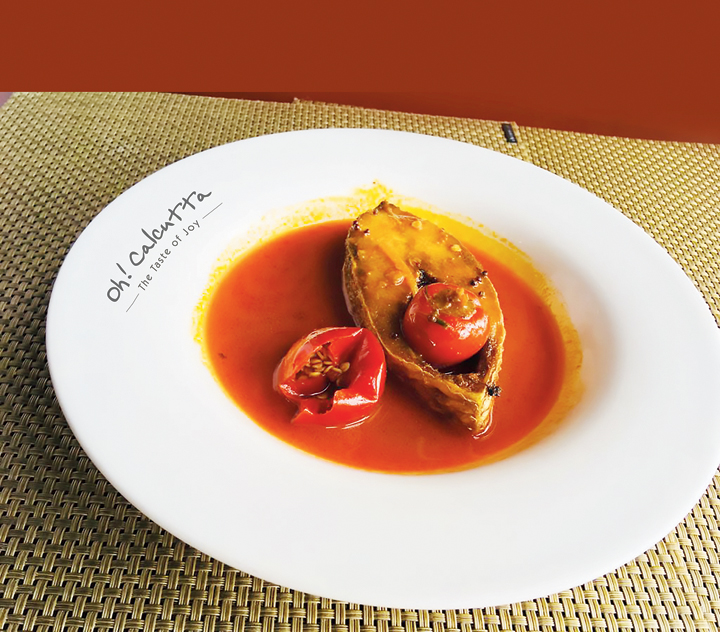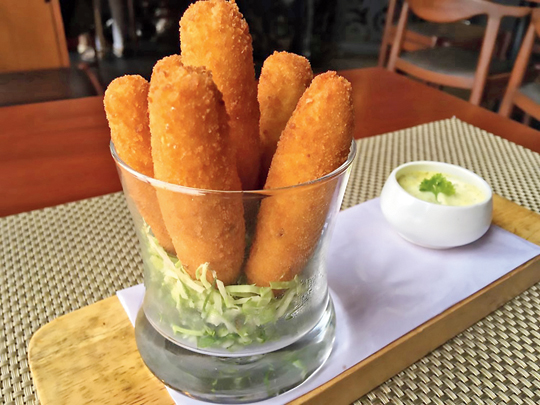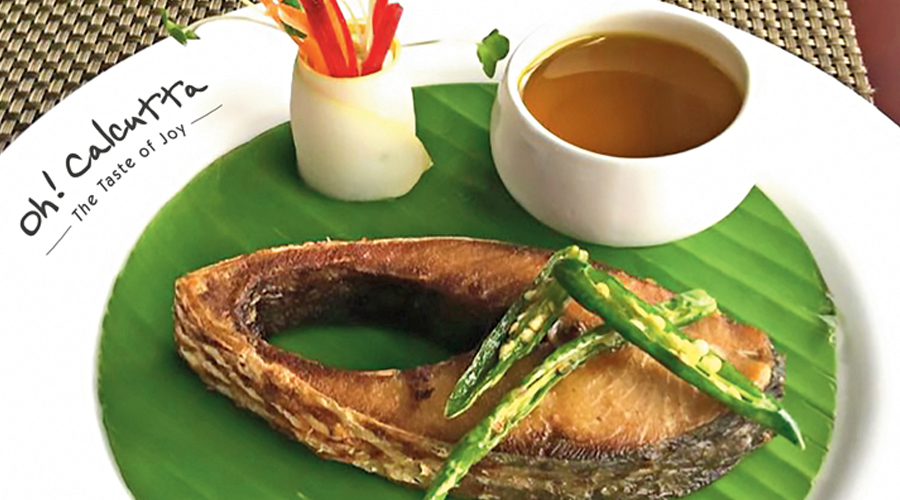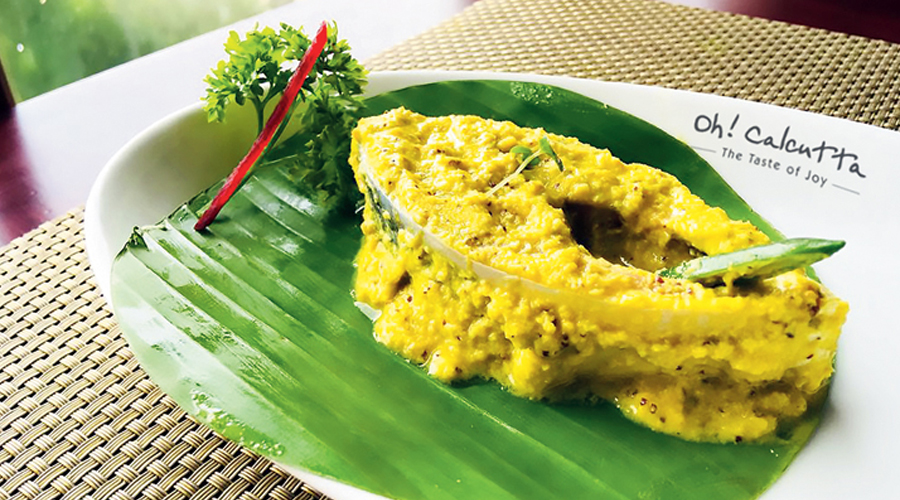The hilsa, or ilish as is commonly known in Bangla, is the pride of a Bengali’s palate. I have not known any Bengali worth his salt who has an aversion to this fish. Any gathering or adda always resorts to a heated argument of the price of the hilsa, or whether the Ganga ilish is better than the Padma ilish. Since childhood I have seen my father and uncles pontificating on this matter. It has been ingrained into us that any celebration or occasion is not complete without the ilish. Because of its high status in the social strata, it is a rather expensive fish — ranging anywhere from
Rs 1,500 to Rs 3,000 a kg. It is not a common man’s dish, yet everyone aspires to serve it, even if it’s once a year. During Jamai Shasthi (a day for the son-in-law), the price of the hilsa just goes through the roof. So also during Saraswati Puja, when a certain section of devotees offers the Goddess jora ilish (pair of hilsas).

Sorshe Narkol Ilish (Boneless) Telegraph picture
When we were young, even before the advent of the wide television network, my friends and I would squabble with each other to go and watch the football match between Mohun Bagan and East Bengal. The deciding factor was that if East Bengal won then we would feast on ilish whereas if Mohun Bagan won then it was maangsho (mutton).
One of the greatest joys during my childhood was when we sometimes had hilsa fests at home. My mother would then display all her culinary skills in laying out all the varieties of ilish. We would begin with Ilish Bhaja (fried) along with its oil, then Ilish Maatha (fish head) cooked in pui saag. This would then be followed by a Paatla Kaalo Jeerer Jhol (thin onion seed gravy). And then the bumper — Bhapa Shorsher Ilish (steamed mustard fish)! By then I would be so replete with hilsa that I could not even think about anything else.

Mochar Ilish Telegraph picture
When I first set up Oh! Calcutta in Mumbai (it was known as Only Fish then), I saw this Japanese gentleman ordering hilsa. I was quite surprised as this is no easy fish to tackle because of its millions of bones. Thinking of warning him I went up to him. Instead the gentleman started telling me that this fish is a delicacy that needs to be relished. He even started educating me about the habits of the fish, namely that it’s a sea fish that swims upstream into the river for breeding. And that’s when the fish acquires its delicate taste. Now, this was not news to me, but the fact that a foreigner was extolling its virtues to me made my jaws drop. He was a Japanese diplomat and for nearly a month he came every single day to eat ilish maachh!

Lal Lonkar Ilish Telegraph picture
In Oh! Calcutta, it is a tradition to celebrate the Hilsa Festival every year. Most Bengali connoisseurs of the fish eagerly wait for this event. This year, however, the pandemic robbed them of the pleasure. I received numerous calls asking me to bring back the queen of fish to them. In Mumbai, we do get hilsa, but we get it as a sea fish and it is known as palla. The form of the hilsa as a sea fish is most rubbery. When the fish migrates upstream during the monsoon into rivers from the Bay of Bengal to breed, is when it acquires its taste. The main impediment to growing hilsa in the fresh water tanks had been its food. Hilsas do not eat what other breeds of fish do. Thus, most of the fish cultivated in tanks were dying so far. But scientists have now come up with the right kind of food. So, breeding has now been successful and growing at a rapid rate. Moreover, it is banned to catch the hilsa between April 15 and June 14, during its breeding season.

Ilish Fish Fingers Telegraph picture
The importance of the ilish has grown by great leaps and bounds. And it’s an importance that has been steeped in time-bound traditions over several years. So, it’s a matter of great pride when in a traditional Bengali wedding the family of the groom presents a pair of ilish to the family of the bride. During the festive season of Durga Puja, on Dashami, when Ma bids us farewell, in most traditional households people eat of what is left over from the offerings. One of the most sought-after dishes is the Naal Panta (a traditional platter of panta, a rice-based dish prepared by soaking rice in water and left overnight) served with a slice of the hilsa.

Ilish Bhaja Telegraph picture
Words fall short to express my love for this exquisite delicacy. So, I had ordered some Doi Illish, Illish Bhapa, Illish Begun Tel Jhal and one of my favourite items, Illish Biryani, for all my friends and family to partake after the partial lifting of the lockdown. So, if ever you are tempted by the fragrance of the hilsa, give steam to your cravings and temptations at your nearby Oh! Calcutta outlet, because it is time to unmask d-ilish-ousness!
Anjan Chatterjee is the chief of Speciality Restaurants, which owns Mainland China, Oh! Calcutta, Cafe Mezzuna, Sigree Global Grill, Hoppipola, Asia Kitchen and more. And yes, he is a foodie! He can be reached at acgenx@gmail.com











